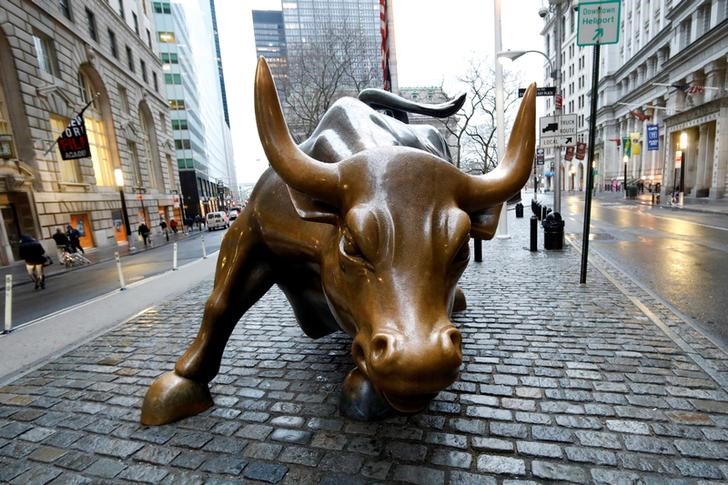(Bloomberg) -- Valuations aren’t actually that elevated. It’s “melt-up” time. Equity laggards are about to have their moment. These are just some of the reasons why bulls say U.S. shares will defy doomsayers and go higher.
The S&P 500 closed at a record 3,431.28 on Monday, buoyed by hopes for a coronavirus vaccine and expectations of continuing support from economic stimulus. While the likes of Morgan Stanley (NYSE:MS) have been among those expressing skepticism about the rally, strategists from Goldman Sachs Group Inc (NYSE:GS). to RBC Capital Markets and Citigroup Inc (NYSE:C). have raised their year-end targets.
Here are some of the reasons why analysts expect more gains:
Laggards to Leaders
For UBS AG Global Wealth Management’s Chief Investment Officer Mark Haefele, it’s time for under-performing stocks to catch up with the high-flying megacaps.
“Laggards and long-term themes are likely to support the next leg higher,” Haefele wrote in a note Monday. “A large share of recent gains have come from the top six U.S. technology firms. For investors with high exposure to these stocks, we recommend rebalancing into cyclical and value stocks, which have so far lagged.”
True Value
Standard measures of valuation may not be painting an accurate picture of whether stocks are expensive or cheap, according to Leuthold Group Chief Investment Strategist Jim Paulsen.
He points to the output-gap-adjusted price-earnings ratio, which shows the S&P 500 was cheaper only at the bear-market lows of 1974 and 1982. While the gauge is “hardly scientific,” he says it has produced a superior return profile since World War II.
“With the U.S. real output gap currently at a record low, the earnings outlook for U.S. companies is probably far stronger than most currently appreciate,” Paulsen wrote. “And, if this is true, the U.S. stock market may actually be trading at a far more reasonable valuation level than traditional measures suggest.”
‘Melt-Up’
Bank of America Corp (NYSE:BAC). technical strategists Stephen Suttmeier and Jordan Young see gains ahead, though they caution that narrowing market breadth can be an issue and is worth watching into September.
The S&P 500 would have to breach the 3,285-3,272 level “to suggest the onset of increased volatility that often ushers in the bearish August-October period,” they said, adding that “until then, the tactical pattern favors more upside.”
If there’s a “melt-up,” they don’t rule out a move up to 3,700.
©2020 Bloomberg L.P.
